Automated transcript
In this event of the Swiss Service Design Network, we speak with Vanessa Monstein, a consultant and Service Design practitioner from Switzerland on how to work with the crowd through open innovation to create better services.
During her talk, Vanessa showed:
- What opening innovation is and what are the theoretical foundations behind it.
- A practical example of how an open innovation community helps improve the tourism sector in Switzerland.
- How monetary prices have a plateau when it comes to attracting and motivating participants in a community challenge.
- How to turn an open innovation community into something that creates a sense of prestige and belonging.
During the Q&A session Vanessa explored questions, like:
- What are the most important factors when we engage a community in an open innovation project?
- What's the simplest way to try out an open innovation approach tomorrow.
A big thank you to Vanessa for sharing all her knowledge with the community.
Welcome Vanessa. Hi, Daniele. Hello. It's such a pleasure to see you today and that you have accepted the invitation for this little event. Thank you so much for having me tonight. I'm really excited to be here and to talk to you.
Without much transition: the stage is yours, Vanessa. I'm excited to hear what you have to share with us today.
Thank you so much.
Talk: Theoretical foundations
---
I will speak about how to promote and support an open innovation community and how activating a crowd can lead to better services.
I work as an Experience Consultant at eBooks in Zurich, Switzerland since last year. I had the chance to study Service Design at the University of Applied Sciences in Chur. And there's one thing I keep saying over and over again in connection to my studies, and that's the quote you can see down here in green.
Because initially I decided to study in Chur because I thought, tourism would be pretty interesting and the service design aspect was just like a nice addition. And then I really discovered the potential of service design and the power it has and I literally fell in love with the discipline.
So that's why I'm here tonight. I did start my career at UBS quite a few years ago and I was also working in the marketing department of a rehabilitation clinic before I became an experienced consultant. Now, I mentioned it before we are talking about a real research project. The research project I will be talking about was in cooperation with Graubünden Feydian during my time at the University of Applied Sciences in Chur.
For the ones who don't know the Graubünden Feydian, that's the destination management of the canton of prisons here in Switzerland. The project was carried out between January and August last year, and the goal really was to utilize the service design tools and methods to solve a real world challenge in the end.
Now, let's talk about the term Open Innovation and what it is. Within literature, you can find different terminologies like co creation, crowdsourcing, and open innovation. Now, the common feature is that they all describe the integration of resources outside the company into the previously closed value creation process.
Now, the concept of crowdsourcing is based on the idea that a group of people under the right circumstances is more intelligent than the brightest minds in that group alone. And a great example for this is Wikipedia, for example. However, open innovation is A little bit more than just the submission of a problem to be solved by a group.
The term of open innovation really means that the research, the development, and the implementation of new services and products takes place both within and outside the boundaries of the company. There are two directions of innovation to consider. One is the inside out process and the other one is obviously the outside in.
Now, the outside in principle describes the opening of the innovation process and the inclusion of external resources into the internal innovation. Those resources can consist of customers, it can be users, it can be public agencies, it can be suppliers, it can even be research and educational institutions, and so forth.
Now, on the contrary, the inside out principle is a bit less common. The idea there is to make internal knowledge let's say, internal ideas available to the outside world with the goal that it will be exploited by other companies or, as a part of other business models. There the goal really is to create a spin off or to go into licensing, for example.
Now, that was... Let's say open innovation in general, and let's talk about open innovation communities. What's that community part that makes the difference? The community really describes group of, a group of people who are virtually connected. with each other, usually on the internet, and willingly share their problems and solutions to various use cases with the company and with each other.
There are also again different types of open innovation to be found. The most common ones really are contests and communities. However, meanwhile, there is a hybrid form which exists and it goes that the innovators submit inputs to a specific and usually somehow rewarded challenge, which is defined by the company.
And while doing so, they use community functions such as sharing feedback. And Graubünden Ferien, by the way, also uses this mixture of like competition and community to generate new ideas for their services and products. Now, we talked about being united or virtually connected on the internet.
That means we need some kind of platform and you have basically two options to build the community. You either build your own community or you go for a paid community. Now a company can run its own platform and build a specific community just like we see here with Migros, BMW does it, many other businesses do it.
And there are also white label solutions on the market to purchase so that you don't have to and start from scratch when you decide to have your own platform. However, building an own community can be quite resource intensive. You need regular contests to remain attractive and you need a community manager who takes care of everyone on the platform.
Because of that, there are also service providers who basically offer their own crowd to companies who need new inputs or have a really difficult challenge to solve. I brought an example on the right here from the Hive crowd. This is one example for such a service provider. And companies can just submit their contest or their challenge.
They set the reward, they set the time frame, and then they will receive input from different experts all over the world to solve their problem or their challenge. Now, as you can imagine, a sufficient number of motivated members is the basis of an interactive value creation. However, the motivational factors of Each and every community member can vary, and they might even change over time.
This makes it a bit more difficult. But, in, within literature, there are four main factors that can motivate community members to participate in such an open innovation community, and they are known as the Fantastic Four Framework. And as you can see, That's Fun, Fulfillment, Fame, and Fortune. Now, the fun factor is really essential to the success of an open innovation community.
It's almost universally rated as a strong motivator, and it's defined as participation for, entertainment, pleasure, or as a distraction. Fulfillment, on the other hand means that members consider it motivating when they can really make a contribution that benefits society and something that they consider meaningful and that just makes them really feel good and feel like I've done something for someone else today.
Now, fame is not really... The goal to achieve fame as we know it, let's say, wow, he came up with that idea and the whole world knows, but it's rather to receive recognition, both from other community members, so it's really fame within the community, and also to receive that recognition from the company.
That's what the factor fame stands for. And then, talking about fortune, now, monetary rewards are not a primary motivator. It's... It's an extrinsic incentive, and you might have heard it before, they're not really sustainable but research suggests that they do also play a role. Just that a reward gives some kind of competitive component to that collaborative approach and can be somewhat motivating.
It is really interesting though that there exists a plateau and studies showed that as both the number And the quality of ideas hardly increase above the amount of 10, 000. So if you say, hey, the best idea will receive 10, 000, or if you say, hey, the best idea which we get from the crowd will receive 20, 000, you will not get more or better ideas.
So I think that's a really interesting point to know. And that also shows that a fortune is only really one part that can motivate community members within an open innovation community.
Now, the members don't only have different motivators, but there's also really just different personas within such communities. They are very heterogeneous and they include people with, different competencies and as we've heard, different motivations. I would just like to have a closer look at a few of those personas that can potentially be found within communities.
One of the most important roles, of course, is the one of the community manager. The community managers are responsible for operating the platform, as well as activating the members, and they serve as the link between the company and the community. Their task is to communicate and, if necessary, to even de escalate and hold up the values of the community.
Another persona that can be found are power ideators. They generate a variety of qualitative ideas or even further develop existing ideas and concepts. And the interesting thing about the power ideators really is that usually there's only a small number of power ideators within one community, but they can be responsible for up to 40 percent of the ideas.
So those are really the heavy users. Supporters, on the other hand, they mainly don't have any own ideas, but they try to share their knowledge and to promote other ideas. Contributions and other ideas and try to add value to the existing ideas. However, reading and commenting can be very time consuming, so there's usually not a lot of supporters within a community.
Explorers join a community because they're interested in a topic and they just want to learn something by joining. And that's just the way I started back in the community from Graubünden Ferien. And it's usually in those cases students or young professionals who start as explorers and in the best case, become supporters, power ideators, or even experts.
Now, there is a difference between the passive members and the lurkers. Passive members are interested in a topic. They just don't make any own contributions or they don't participate in discussions. Rather, they are inspired by the content and the comments of others, and they just try to learn something by simply reading and...
Staying in the background, staying up to date. Unfortunately, lurkers make up a majority of the members on most platforms, and the difference there is really that they never become active and often don't even visit the platform, or if they do, then really just occasionally.
Now, I would like to briefly touch on the StageGate process as well, just because the StageGate process is a widely used innovation tool. And from the idea through development to market launch, various phases are passed, which are separated by gate. Based on defined criteria, decisions are made at the gates on whether to continue, terminate, or reiterate the idea.
Open innovation communities are extremely valuable, especially in the first phase of the process. And I would also really briefly talk about why those gates are so important.
That gates are important when you ask the internet for ideas shows this example right here. Thank you. In March 2016, the Natural Environment Research Council announced that the members of the public were being asked to suggest names for this ship or this vessel that you can see right here. Now, the crowd wanted to name the vessel RRS Boatymac Boatface.
Apparently the NERC who launched the contest stated they would not, or that they would have the final say, and that the most popular name in the poll would not necessarily be the one used. Now, such a statement of course leads to a loss of credibility in the end, and the boat is now named RRS Sir David Attenborough, so asking the crowd here for ideas was just I'd say semi optimal and then it also shows that no matter what crowdsourcing activity you do, you need to firstly take care of your credibility and you need to implement certain gates.
All right, enough about theoretical backgrounds.
Talk: Case study
---
Let's talk about the real project. What's the Inolab Graubünden? I've talked about the Graubünden Perion before. That's the destination management and the Inolab Graubünden is basically the innovation management at Graubünden Perion. It consists of a web based interactive platform which allows across destinations and across sectors to generate new ideas, to discuss them within the community and to condense and evaluate them.
There are two ways to generate ideas on the platform, either within time limited and predefined build up programs, so called campaigns, that's the contest that we've heard before, or via a general channel where you can Just, dump in an idea whenever it comes to your mind. The ultimate goal is to work out new experiences to bring more guests to the Canton of Prisons.
That's just why this whole platform exists and why there's a community where they try to collect ideas and condense them. In June 2022, the community counted around 350 members. consisting of various service providers in Graubünden Tourism. These include mountain railroads, representatives of the destinations, employees of Graubünden Federen, and also other players.
Now, important to know is that the community is limited to a maximum of 500 members. This is due to the license agreement with the service provider or the software provider in this case. So it means it's not a completely open community it's open as when it comes to, being with the outside of Graubünden Ferien but space is limited within the community.
The problem at the beginning was really the fact that the needs of the members were basically unknown and, participation was limited to a few members only, so you always had, the same four, five people maybe who were giving their ideas or sharing their ideas and the other 345 members were really just not around.
Based on this initial situation, three research questions were basically formulated, and the one was to focus on the needs, the requirements and the expectations of the community members. Then also the question, how would they like to be maintained and valued? And the third point, which was the most important back then, is how to activate participation and promote the members to, actively be part of the community.
My goal in the end was really to use the software which was given in the best way possible to cover the needs of the community members and therefore motivate them to participate actively in the long term. We've had our Open Innovation Community, We've had our members, it was just a sleep and my goal was to find out what they need and how to activate them.
Some of you might know the double diamond process already. The double diamond is divided into four phases. It's discover, define, develop and deliver. Now let's look at the first phase which involves conducting research and better understand the problem and the target audience. To achieve that, qualitative data was collected through interviews back then, and in total, nine interviews were conducted with members of that Inolab Graubünden community.
All of them had different backgrounds and also different experiences, and it was really interesting to see that the respondents defined their activity quite differently. Now, I've had some who participate in almost every campaign. They said I'm an active member. And then I had others who exclusively participate in the InnoCircle.
And yet, all of them describe themselves as active. Now, just for you as a background information, the InnoCircle is a biannual event for the presentation of new future projects in tourism, and as a community member, you can partake in the event, but the participants of The InnoCircle and the InnoLab community are not completely the same, so there can be different people within those two things.
There were really people saying I'm participating at every InnoCircle, so now I'm an active community member, but they've never been on the platform. You can see, as you see the definition of active was quite different. Some of the respondents were also invited by the community manager to evaluate ideas and of a recent campaign, for example, or they have already participated in other open innovation communities, such as the Hive Crowd that we've seen before.
And these experiences were also collected and included in the findings because it was really interesting to see what. There's the different, where there are differences maybe, or what even isn't working in both or what is working within those communities.
All right, now the second phase of the double diamond is the define phase, where it's all about condensing the information and really being able to specify a problem and know where to go forth and aggregate all the information that has been collected. Now, a whole wealth of both pains and gains emerged, and roughly speaking, the pains can be divided into the categories of communication, sustainability, and identification.
The interviewees had the need to know what happens with their ideas. Are they going into evaluation? Or will one of their ideas even be implemented? To them, the process really just ended quite abruptly. They said I've shared my idea and I haven't heard anything since. And that made them sad and was a sign that they were really lacking the communication about what happened to their idea.
In the area of communication, however, there are also gains. The interviewees especially praised the commitment of the community manager and back then the community really, the community manager resembled that community the inner lab Graubünden was just living off of their community manager.
But they also valued the clear guidelines within the campaigns. So they said, to me, it's clear what the community manager wants. To me, it's clear how I have to state my ideas and what is needed and what not. In addition, the gains can be divided into interests, appreciation, and interaction. Based on the previous findings these user stories could be formulated.
Now, campaign independent appreciation, the connection to Graubünden Ferien and the canton itself, the contact with like minded people, and the sense of, doing something meaningful, and satisfy the own interests, were really the crucial points that came out here. And to me, it became clear that the interviewees considered their membership to be a privilege almost.
And I thought, okay, if people who do not log in for, months or even years cannot derive any added value from an Inolab membership, then it should be advisable to basically replace them with people such as, students, locals, guests. Whoever that would seek such a membership based on their interests.
And my thought was that by continuing to limit the membership to 500 members, it remains exclusive and it gives the membership a higher value. Knowing 500 and there's a thousand others waiting behind me just... To participate as well makes me feel quite different than when I know nobody cares whether I'm logging in or not.
So that really made a difference back then. And according to this The how might we question was formulated as well and that was really how might we make the InnoLab Graubünden community so popular and so attractive that interested people consider membership a privilege and therefore return to the platform again and again because if I know that there's a thousand others waiting I'll go on that platform and I'll bring in my ideas because it's so important to me.
And if I don't the next one will be happy. He can take my place, basically. This also brings us to the next phase which is about systematically collecting ideas and developing them further. Now. Is there a better way to do this than to pose the how might we question to the community and collect ideas via the platform?
I was like, that's the best thing I could do. And I had the chance to launch a two week flash campaign and 12 ideas by the community members themselves were collected. ideas. and condensed them together with some of the community members in an online workshop. The results and all the findings to that date were then grouped together and presented in idea descriptions.
And then I was like, okay, I have those different ideas. I could go in one direction, I could go in the other. So the next step was to ask experts and... Make them assess the five elaborated areas that I had in the end to know which one could possibly be further developed. Because I was like, I don't know which one, I could have said this is the most interesting to me, I'm just going with that one.
But I thought I'll ask the experts and say, hey, where do you see the most potential? Where should I go further? And, the five areas of action that were created or, just came out of the workshop and have been assessed are right here. The chat is about casual and campaign independent communication. And furthermore, the community manager could even use the channel to, inform about campaigns, about winning ideas, because we've heard.
There's a need for that, but also about events, such as the Inner Circle, when the next one will be, or even other topics, or even ask the community, hey, What topic should we cover next? The idea of events is to give members the opportunity to participate in a series of physical and digital events. And the events are really then about developing ideas together in a pretty short amount of time.
So the physical events could be held in the woods, for example, on a hike or on skis in the winter instead of on the platform. Now the gamification rewards members with innovation points for active participation in the process. That can be the submission of an idea, a reaction, or a comment. The points can then be exchanged for vouchers and a monthly leaderboard encourages competition among members.
The topic of training consisted of the idea that members are made aware of relevant offers from, let's say, external providers and are given access to exclusive learning materials on topics such as Ideation, Innovation, Trend Research, Tourism, and such. And the idea of the blog is based on describing the winning ideas within the campaigns and just, short blog posts and explaining the further steps in connection with those ideas.
Now, to decide which ideas should be prototyped, four experts in the field of Community Management, Community Building, and Open Innovation assessed the potential of the individual areas. As you can see, gamification scored best, and according to experts, this offers the advantage of a playful approach to the platform, but it still ensures a valid measurement of the interaction.
That was really the idea, or also the reason why the experts said, hey, I would consider gamification as the area with the most potential. Whoops! Now, I was a bit too fast. Sorry about that.
Going to the other direction. Here we go. The final phase involves prototyping and testing the solution on a small scale. Now, for this purpose, an interactive click prototype was designed and, again, tested and assessed by the same experts. My experts have quite some work to do. The prototype includes three sections, the implementation of a scoring system, a ranking list, and a reward store for redeeming the collected points.
Individual parts of the prototype already existed. For example, innovation points can already be collected with the software that Graubünden Fadian uses. So that wasn't really a new feature, but it just didn't have any significance up to now. Those points were just there, but nobody really knew why they're there or how they got there, and in conclusion, the prototype basically just enriches the existing platform. Now, I'd love to show you what that specifically looks like. And there's one thing left to say, and I'm really sorry about that. The prototype is in German, but I will guide you through. Now, when you sign up as a member, you start on this page right here, just, a regular login page.
And after the successful login, you land on the starting page. If there is a campaign currently active, you can click on it right here and view it also. And you can just go into that campaign and share your ideas. In addition, the link to the channel for general ideas is also always here at the bottom.
And if you click under Activities, which is Aktivität here in German, you see chronologically the latest comments and ideas of all members, so you can really see what was going on in the last few days and weeks within the community. Now, from the Discover page, the actual prototype starts. There is a tile labeled Innovation Points, and this is new, this wasn't in the actual platform.
And when you click on it, you get You know, information about what the points are all about, how you can collect and redeem them, and you get the information that there is a leaderboard. It's just some general information. Now, to prevent people from just randomly submitting ratings and, taking advantage of the system, there is a consent page, where members need to confirm that They don't have any abusive intentions, just, going to every idea to collect points.
The innovation points can then be viewed within the profile right here on the bottom right, and because this function already exists, there are already, even in my profile there have been points already which are visible to the community members. The idea of the prototype is that you can click on those points right there and then you get to a detailed page.
The function that you can see which points you have collected when, and in which context already exists as well. So I can already see, okay, I collected points with this campaign for that reason and how many points that I was given with each. activity that I did. What is new here are the gray buttons on the upper right, and if you click on the little i next to the title on the top left, you can always reach the help page.
Now the help page offers detailed information on which action is worth how many points. And it is then explained how many points you need to be able to redeem them and that the total points or the total number of points remains because otherwise it would affect the ranking. Speaking of the ranking list, this can also be reached via the same starting point as the help page in the prototype.
Placed here at the top right now, the ranking really just shows how many points you've collected in total and within one month, and you can see on which ranking that you are on, which ranking the others are, and if there have been any changes.
The reward store can then again be accessed through this page right here, so you see we're always coming back to the main points site, and to do this members can just simply click on the redeem points button on the upper right. And within the reward store, you can see on the left how many points you have in total and how many you can still redeem.
The reward store is divided into different categories and for us it was really important to ensure the reference to Graubünden in the form of Culinary or sports or destinations in general. Many destinations, for example, offer vouchers that can then be redeemed for all kinds of activities within that specific destination.
And we also have the innovation special category. There are things like, design thinking card sets or literature on innovation. When you select an offer, you get detailed information about it. Furthermore, it's shown how many points it like costs, so to speak. And of course, you can put the product in the shopping cart, just like within a regular online store, finally, there's an overview and you can redeem your points for the selected reward. So that's pretty much the prototype right here. That was the one also given to the experts and on a scale of one to five, the experts rated various parts of the prototype, which came in. So they rated the prototype in general, but also the consent page, the help page, the ranking and the reward store.
Now they did really like the consent page and the help page. They thought they, that's really an added value. However. The experts did highlight that the desirability of such a solution needs to extensively be talked about and tested, of course, with the members. To say how much potential there really is behind it, you'd have to go within The community show it to members and do user tests and find out if the desirability is really given.
I would like to close the circle and come back once again to the research questions. Now, based on the interviews, it can be stated that members have a need for information when it comes to, the evaluation and possible implementation of ideas. They would also like to be more involved in the innovation process in general and There is a need for a stronger sense of we belong together as a community.
It was too loose to them back then. One of the ways members want to be valued is through recognition. This is already realized through quick and authentic feedback on submitted ideas, the way the community manager does it already. So he did a really good job on that back then already.
Now, members want to be sure that their participation is noticed and that their effort is worthwhile. The campaign independent appreciation can be picked up through the just presented gamification features and also that gamified component provides, entertainment and pays into the motivator of fun within the Fantastic Four framework that we saw at the beginning.
Now, although rewards are not a primary motivator, Members consider them to be something really nice to have. Graubünden Paytent shouldn't go there and, cancel the rewards or anything. That really makes a difference to the community members. And also, being invited to evaluate ideas within a campaign, being asked to look through the ideas and give a statement, makes community members additionally feel honored and feel special.
And, just valued. Now, during the project, it became apparent that member activation can be achieved by evolving them in the innovation process, by creating identification and ensuring the Fantastic Four framework we learned about earlier, and also setting impulses in those five areas of action that were worked out.
All right, you may now be thinking, okay, What's next? The research project provided a whole toolbox of possibilities. Now, the first step, in my opinion, is really to expand the community with people who consider participation a privilege, and the goal should be to fill those 500 available places with members who are as committed as possible.
Afterwards, it's, of course, important to decide which area of action really can be Implement it, and to what extent, and you could also say, okay, screw gamification, we'll go for the events, and it's also a possibility. And so the next step is really to evaluate for oneself to say, okay, where do we see the most potential to activate our community and set an impulse cause and and if the gamification is pursued further, it must be defined how to deal with the points that have already been collected. You have to think about, hey, what are we going to do with those points now that are on the platform already? Are we like, just giving them and they're able to redeem as of now?
Or are we setting back everything to zero, which would cause a bit of trouble probably. So that really needs a decision.
The greatest learning for me was that there's not one solution for the promotion and support of a community. In the end... The research just offers areas of action and insights that can support some community managers in activating their community. One of the biggest limitations was certainly the access to the field.
Of course, it would have been really interesting to talk to those people who do not participate in the community to find out why. And so I just talked to, the rather active ones. Because the software was given, the possible gamification mechanisms were also limited. And to me, one of the most important things was that the stagecare process is used by Graubünden Ferien in innovation management and was non negotiable.
But perhaps there are just innovation processes where the involvement of the members... would automatically be given more extensively. In this context, it would be really interesting to, conduct further research and to investigate whether a kickbox concept, which you might have heard of before Adobe and Swisscom use, it would be interesting to find out whether that's an option for Graubündenphilien as well.
Within that concept or that kickbox, In this process, the person giving the idea is basically responsible for the entire innovation process of their idea, so they're not falling out of the process. All right, at this point, I would just like to thank you for your attention.
And I'm really looking forward to your questions and our discussion.
Daniele's favourite insights
---
Awesome. Thank you so much Vanessa for preparing this for us full of very interesting elements. I will highlight a few elements that were really strong for me. The one thing that really changed my mind about this open innovation that you shared is this. Yes. Open but limited, which gives a prestige element, which I find is extremely interesting.
And yes, it's open, but if you're not an active member, we're gonna give your spot to someone else, and we want to be, we want it to be something valuable, in both senses. And I think this is something that for me is quite different from the usual way I was seeing this. So thank you so much for that.
Q&A: Anecdotes
---
I will go on and start with the first question from our lovely mate coming From from Deval will ask great talk, very clear and insightful. Do you have an anecdote related to your project that you could share? I think I do just personally, because I'm still within the community as a member as well, and I have to tell you, I was really excited.
They launched a campaign not too long ago where it was about a new product in the Anine where they had a new railroad. product and connected to culture and they were just looking for a name for that product and I thought, oh, that doesn't take much time. Open it on my smartphone and entered, I think, one or two ideas.
And then I had a moment where I got an email or I received an email and it stated, Hey, your idea has been set forth for evaluation. And I was like, Ooh, awesome. My idea. They're really looking at it. And I felt. A sense of excitement, knowing someone's looking at it and who knows, maybe my idea wins and maybe that train route will be named after my idea.
And then just nothing happened, like at all. I haven't heard anything at all. And unfortunately, like it was almost two or three weeks ago on LinkedIn, just. And, by coincidence, I saw a marketing campaign for that railroad product and I was like, okay, obviously it wasn't my idea, which one. So I think that really resembled, I was like, okay, I feel, I know what the community members were saying to me.
And, that was really what happened to me and what also, yeah, showed me what their problems were. And unfortunately also that the problems weren't quite solved yet, even a year later. Indeed, the follow up part is obviously quite. It's hard to organize, but if done well, and I've been a bit on the side of the organizing bit, and I failed at that too.
So I, I will be completely honest. I know how hard it is, but also seeing the emotion, I know also how good the result can be if it's done well. And the first part was really nailed well, the emotion, oh wow I'm selected. And then, oh, it's being selected by someone to go get on a date and then later they ghosting you, that's the kind of roller coaster that you're going through.
So if we go back to it as a date, you wouldn't act like that on a date, and you have a coffee or maybe you just say, Hey, it was light. What was lovely, but doesn't feel that we should be together and it's okay.
Q&A: Which factor is the most important?
---
We have another question that I'd like to share here, which is from Federico, who says, I was wondering if you.
We identified which ones of the four factors from FAME, Fortune and Fulfillment, may work the best in this open innovation community. The FAME was actually done pretty nicely already by the community manager because he was already, reacting to the idea saying, Oh, awesome. Thank you. What do you think about that?
So in the first phase of the process, he was really active in engaging with the community. So fame was actually covered quite well already. They felt rec recognized by the community manager, at least not so much by the community members, but at least by the community manager. And also fortune didn't play as much of a role.
Members stated that, it's nice to win a. one day ticket for the whole railway network in Switzerland, for example, but that's not motivating enough to submit an idea. So it was really more the commitment or the fulfillment and the fun, which had to be pushed, in this community especially.
The fun because they felt we're hanging together so loosely, it's, there's not much happening, there's not much of... Distraction or entertainment really happening. So fun was probably the biggest one and fulfillment was the second one just because If you know that you are in a community where there's a thousand people waiting behind you and you get the chance to, give something to a company or even a whole canton in Switzerland, you could even push that fulfillment even more.
And in the end, they didn't want to communicate it as strongly that there's only 500 places and that there's potentially a hundred people be waiting behind you. So I think fulfillment and fun would really have been those two factors with the most or the greatest effect. It's super interesting, again, this idea of recognition, how you can play with it saying, Oh yes, we could.
have 500 people in it, but what if we just had 100, but who are highly active, and we reduce it and maybe we have a waiting list and and we play a bit with that. So definitely something to look for.
Q&A: Who were the experts?
---
We have another question who comes from I will say the name very weirdly. Sorry for that.
Salt, I assume, who says could you specify who were the experts in this project? What's the background and stake in the product? And maybe to go further. How do you select experts when it comes to this kind of open innovation challenges? Honestly, it was really hard to find experts, especially because, those are people who don't have much time, who are caught up in so many things and tasks.
So I felt really lucky when at least someone replied to my request and said, okay, I will have a look at it. In the end, they didn't have a... stake in the project itself. So they really did it just because that they thought I asked them quite nicely, so it wasn't that they had an interest in pushing Graubündenphilien or pushing the platform specifically.
They did have a background in community building, just, that sense of community. without that open innovation aspect. I did have one expert coming from open innovation from that kickbox site and that expert was setting up the kickbox concept within Swiss companies. That expert was familiar with the kickbox concept and open innovation in general, and there was another expert coming from the, coming from Hive, that was one so it was really also one coming from even open innovation communities and such platforms, and the last And the last one was from open innovation in general, coming from a Swiss ICT.
So also like virtually connecting people and being part of opening up an innovation process. Awesome.
Q&A: The simplest way to start open innovation
---
My favorite question for this kind of talks is usually the one which is What's the simplest thing that people can do to start a bit of a journey in this world of open innovation? What's something that anyone, a cafe, a dentist, a church any business could do to start their open innovation journey tomorrow?
Something simple that you say, this is something that I would But there's an action that people could take to get started. It's probably just talk to the people and not only talk to your employees and let them say how should we do it differently, but talk to your users, talk to your customers, talk to your suppliers and talk to the people on the street asking them why they're not coming or what you should do differently and for them to come into your cafe.
So it's really just going out there and asking. All sorts of people, what they think and collecting that and make sense of that and just stay open minded. And even if one idea maybe sounds completely, I don't know, not working for you, and there's might, there might be one thing you can take out of it for you, even if it's not the entire idea.
Especially with those communities or those open innovation communities, you don't get ideas which you can just... So they are, they always need some work up or some touch ups but it can be a seed or an indication for a direction. And that also works just by talking to people on the street. So lovely.
So basically start with the people you already have in the places you already have. Shoot a few emails ask on LinkedIn something, ask on your Instagram something, ask the people at the counter something. Just. You don't even need to build an app, get something fancy, just start with... where the people already are.
Closing words
---
Vanessa, thank you so much for spending the time, investing the time, and being an example for the next generation of Service Designers in Switzerland. Thank you so much. Thank you and thank you to everyone who came here and listened to this talk.
This webinar transcript was generated automatically, so it will contain errors and funny sentences.


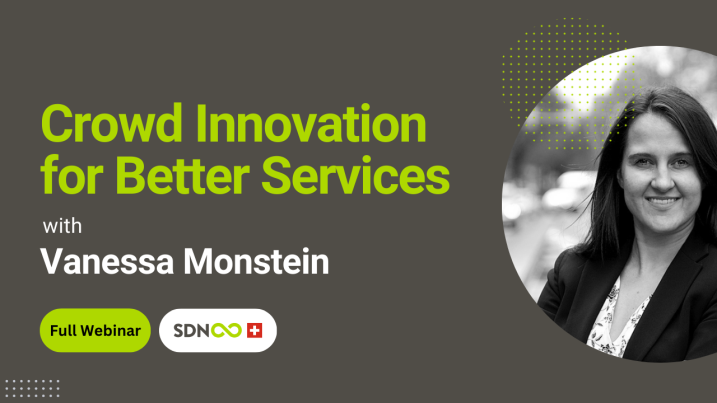
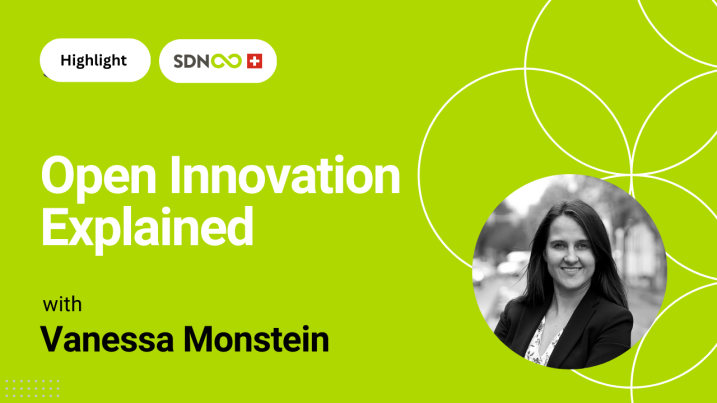
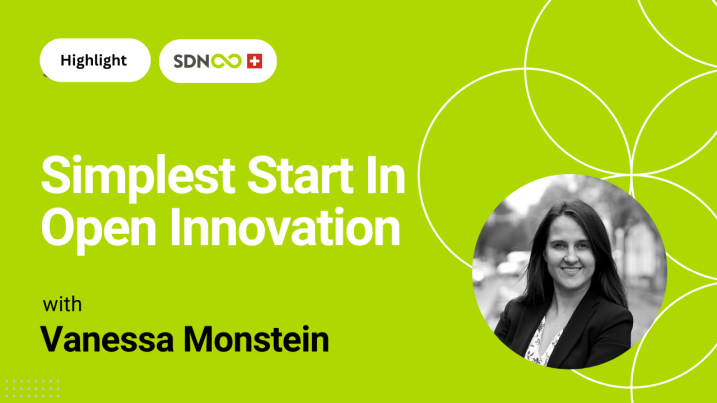
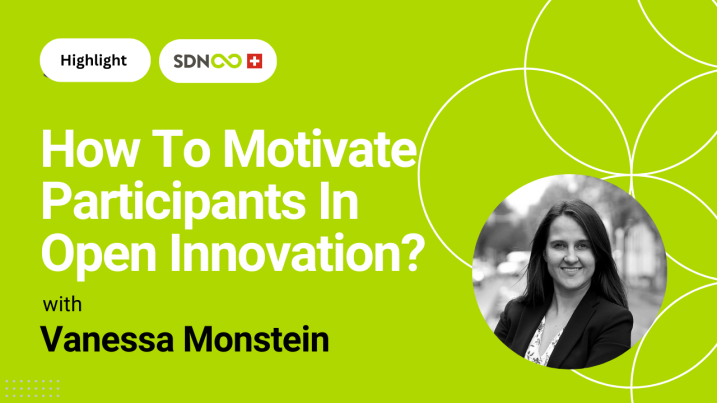
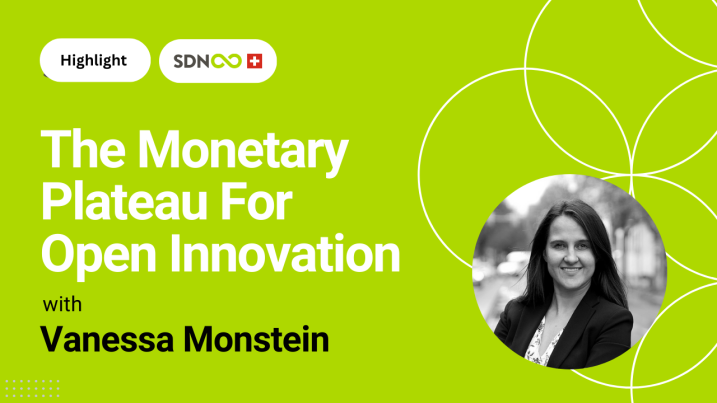
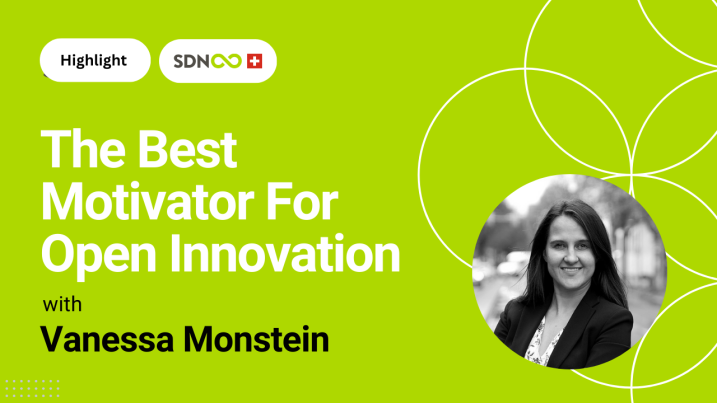
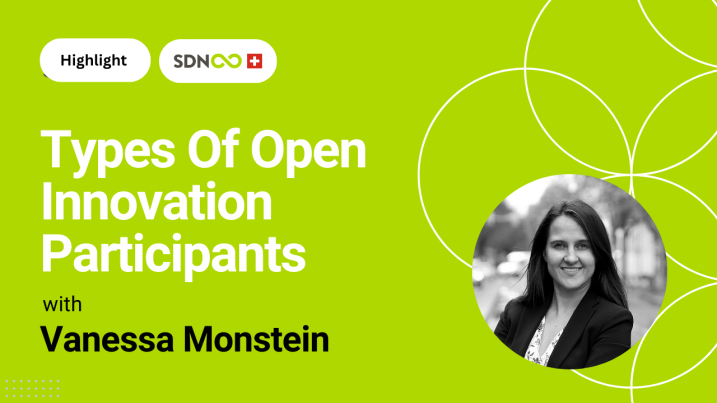

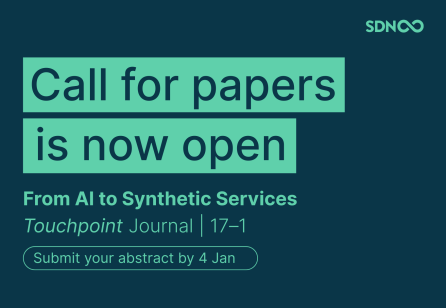



Share your thoughts
0 RepliesPlease login to comment